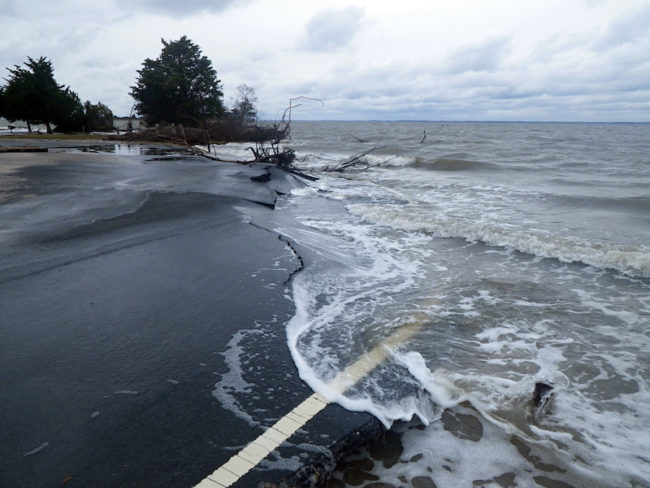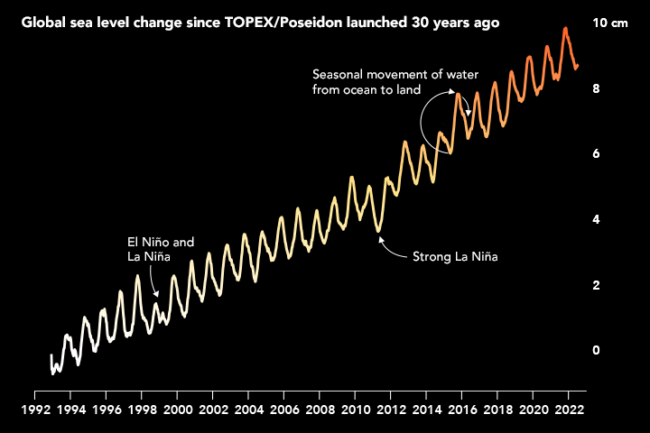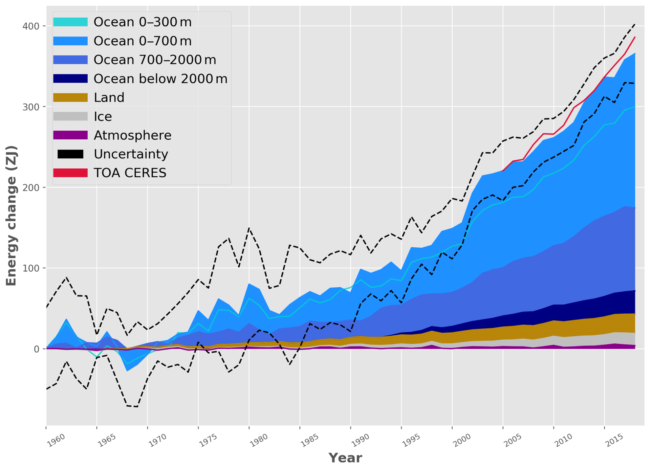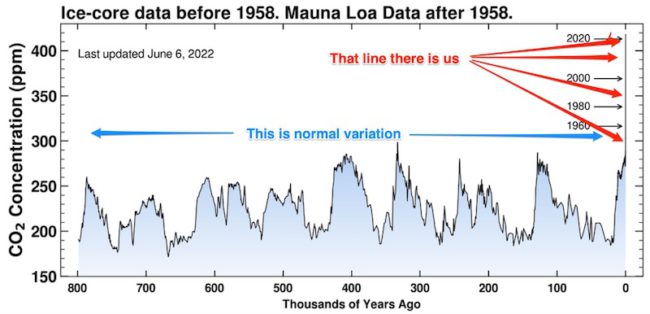
The traditional way of measuring sea level rise has been via the use of Tide gauges. It sounds simple, just gather data of low and high tides from all around the coast, crunch the data and publish the results.
One small flaw, it is not at all that simple.
Why are Tide gauges challenging?
There are specific problems with taking readings from tide gauges at face value, and unless you consider these, then the readings you get do not tell you the complete story.
Simplistic bathtub thinking just does not work.
Tide gauges are grounded on land. This means that they affected by the vertical motion of the Earth’s crust, caused both by natural processes and human activities. Natural processes to consider would be a glacier melting and thus causing the land to rise, and also of course earthquakes. Human activities that have an impact include things such as groundwater depletion and dam building.
Rather obviously tide gages are also local and not global. We don’t live on a disk world. We need to also remember that we live on a self-gravitating, viscoelastically compressible, rotating planet. In simple terms, there can be global variations.
It is also not just about melting ice.
If you heat water, then the additional kinetic energy of the water molecules increases. The molecules move more and so they maintain a greater average separation. In other words, as the ocean warms up the water in it will expand.
Roughly about 50% of the current sea level rise can be attributed to thermal expansion.
So how reliable are the measurements we have, just how much confidence can we have in our current understanding of sea level rise?
We do have a far better very accurate tool
For the last 30 years we have been using satellites.
The first of many was on August 10, 1992 when TOPEX/Poseidon was launched. Since there we have had a continuous record of monitoring …
- TOPEX/Poseidon (1992 to 2006)
- Jason-1 (2001 to 2013)
- The Ocean Surface Topography Mission/Jason-2 (2008 to 2019)
- Jason-3 (2016 to present)
- Sentinel-6 Michael Freilich (2020 to present)
The basics are easy to grasp. As they orbit they send out a continuous pulses of microwaves that then bounce off the ocean surface back up. These are then used to calculate the precise height of the sea surface. Getting that to work is of course complicated. You need to know exactly where the satellite is, and so the length of time for the radio pulse to arrive back enables the calculation of the exact height of the ocean surface.
Rather obviously the data is far superior to previous tide gauge measurements.
Because this has now been in continuous operation for thirty years, the depth of the data available looks beyond normal natural variations and gives us an insight that goes beyond seasonal, yearly, and decade long cycles.
What do we now know?
There are key insights …
- Sea level really is rising.
- The rate at which sea level is rising is accelerating
In the 1990s the average yearly rate of rise was 2.5 mm per year. That rate has now increased to 3.9 mm per year.
Millimeters?
Well yes. The initiative is a global one that includes not only NASA but also other international bodies such as the European Space Agency, hence by convention they articulate measurements using Millimetres, not inches.
Hit pause again, 3.9 mm is tiny, so I don’t need to worry about this?
Actually we really do need to be deeply concerned. 3.9mm per year might indeed be tiny, but over the decades it adds up. Remember, the rate is also accelerating.
Since the first satellite launched in 1992 the global mean sea level (as illustrated below) has risen 10.1 cm (that’s 3.98 inches for normal humans like you are me) …

What Comes Next?
Within a Feb 2022 report, the conclusion is that by 2050 the US coastline faces about 10-12 inches increase above today’s measurements. Reminder; 2050 is not far away. The amount of time between now and 2050 is less than the amount of time between now and 1992, the year that first satellite was launched to gather these measurements.
This is a not a slow gentle rise. Instead King Tides, and storm surges will become increasingly more invasive, more intense, and far more damaging.
But what happens after 2050?
The projections are dire.
By 2100 sea levels could be as much as 1.1m higher.
Literally hundreds of millions of humans, perhaps closer to one billion, will be impacted.
Are we completely F**ked, is this a lost cause?
Short answer: Nope.
Things we can do now include …
- Tackling the root cause by reducing our emissions now. One way or another we will reduce our emissions. Either we do it now and nature will force it upon us. Let’s start now.
- Building flood defences. Understanding what is coming and when enables us to plan ahead and prepare. In some places it may also make sense to prepare by retreating back from in indefensible.
- Protect CO2 sinks such as forests and grasslands
Why is this now news?
The various institutions that measure and monitor sea level are collaborating to raise awareness via a joint initiative.
- NASA Earth Observatory (Aug 11, 2022): Tracking 30 Years of Sea Level Rise
- World Economic Forum (Aug 25, 2022): 30 years of sea level rise in 2 charts
What else do we know?
There is an East Antarctic ice sheet faces collapse if global temperatures rise above 2 C. We are very close tho that already. If all the ice in the Antarctic melted then that’s enough to raise sea level by 52 meters. That would not happen quickly, but would unfold over centuries. The concern is this. Rinse global temperatures above 2 C and we face … “a rise of 1.5 metres to 3 metres by 2300 and up to 5 metres by 2500“.
In other words, we still have choices.
What about the oceans?
Heat waves don’t just happen on land, they also happen in the ocean. More than 90% of the excess heat from climate change is absorbed by the seas. Since about 1990 the ocean heat content has been increasing at an accelerating rate. The top few meters of the ocean contain more thermal energy than the entire atmosphere.
Here is where things stand at the moment …

Data reference for that is here.
Bottom Line: We must reduce our CO2 Emissions
Who you vote for matters. We need the right decision makers in place.
Let me finish with one more chart, the Keeling Curve. We know how much CO2 we are pumping out and we can see where things currently stand. This is the curve that we must bend downwards …

How will it all play out?
I’ve love to think that we will get this sorted. With sufficient political will we really could.
The problem is that I honestly don’t think the depth of political will needed is there. Instead we will fumble along, with some doing their very best and many others assuming that they don’t need to do anything because somebody else will get it all sorted out.
As things happen, we will respond in meaningful ways, but because we waited until something happened to spur us into action, we may end up finding we are already committed to a great deal of the consequences. The best we may achieve is to simply slow things down sufficiently to buy enough time to adapt.
I want to be wrong, I wish to be wrong, I hope to be wrong, I desire to be wrong. I’d honestly hope to be proven wrong.
It it really possible Now?
- Electric vehicles are here. Replacing many internal combustion engines can and should be accelerated
- Energy via solar, wind, nuclear, geothermal can give us all the power we need without buying fossil fuels
- Steel production accounts for about 10% of global emissions – green steel is viable.
- Green hydrocarbon fuel for air travel really is now also viable.
- Rail CO2 capture is a fascinating idea
But all that costs $$$
True.
But so does doing none of it. The crux of the argument is that the cost of doing nothing will be greater than the cost of taking such steps
Meanwhile as we dither, the sea level will continue to rise at an accelerating rate.
Am I putting my own wallet to work on this?
Yep, my solar panels and batteries arrive in a few weeks. Yes it costs, but crunch the numbers, assuming you have suitable roof space, and you will find it will pay for itself rather faster than you might assume and rather quicker when compared to the cost from even a few years ago. So yes, I’m not just all talking no action.
